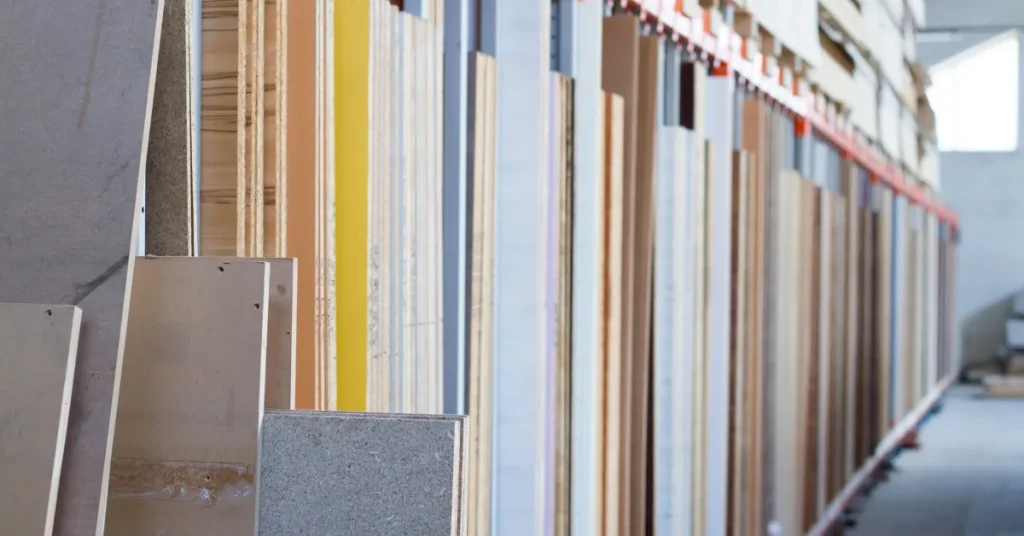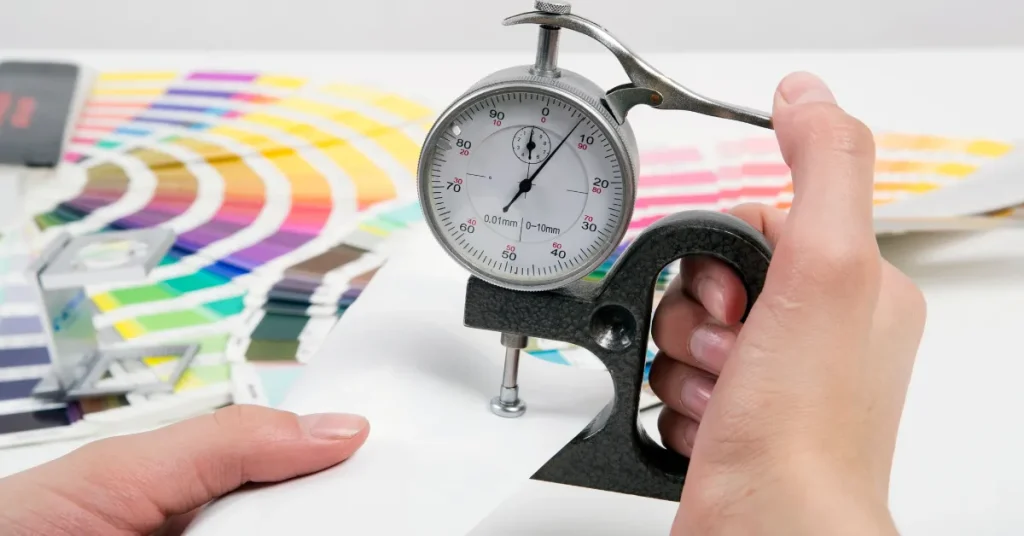3 mil is 0.003 inches thick or approximately 0.0762 millimeters. This measurement represents a unit of thickness often used to describe materials like plastic sheeting or paper.
Determining the thickness of an object is crucial when assessing the material’s strength and suitability for specific applications.
A “mil” is a commonly used measurement in manufacturing and industries that require precise thickness specifications, such as in the production of plastic bags, or in printing and labeling.
The mil, not to be confused with a millimeter, is a thousandth of an inch and provides an easily understood reference point for those working in sectors where imperial measurements prevail.
Consequently, a 3 mil thickness strikes a balance between thinness and functional durability, serving a variety of needs while remaining relatively lightweight and manipulable.
This makes 3 mil an important specification for consumers and professionals seeking materials that offer protection or structural integrity without unnecessary bulk.

The Mil Measurement Demystified
The Mil Measurement Demystified: Imagine covering a surface with a plastic sheet. You might wonder how thick that plastic is. This is where ‘mil’ comes into play. Mil is a measurement unit. It tells us how thick a sheet is. Thicker sheets are stronger and more durable.
Units Of Thickness: Mil Versus Millimeter
Different parts of the world use different units to measure thickness. In the United States, ‘mil’ is common. It is not the same as a ‘millimeter’.
| Measurement Unit | Description |
| Mil | One mil is one-thousandth of an inch. |
| Millimeter | One millimeter is one-thousandth of a meter. |
The Origin And Usage Of The Mil
The word ‘mil’ comes from the Latin word ‘millesimum,’ meaning ‘thousandth.’ A mil is a very small unit. It is perfect for measuring things like plastic sheets, paint thickness, and electrical tape.
- Plastic Sheeting: Often measured in mils for home construction.
- Paint: Car paint thickness could be around 5 to 6 mils.
- Electrical Tape: It may have a mil thickness for insulation purposes.
Mils can be used everywhere: Manufacturing, construction, and many more fields. Knowing the mil thickness helps professionals choose the right materials for their work.
Comparing Mils To Everyday Items
When thinking about thickness, ‘mils’ might not be a familiar term. Yet, everyday items can help us picture what a 3 mil thickness means. Let’s explore how 3 mils compare to things we know well.
Visualizing 3 Mils With Common Objects
A ‘mil’ is a unit of thickness equal to one-thousandth of an inch. To imagine how thick 3 mils is, consider these comparisons:
- A standard piece of paper is about 10 mils thick. So, 3 mils is roughly a third of that thickness.
- Plastic grocery bags are close in comparison, typically around 2 to 3 mils.
- A human hair ranges from 17 to 181 mils, so 3 mils is much thinner than a single strand.
Thickness In The Context Of Household Items
To translate 3 mils into more household terms, here’s a handy reference table:
| Household Item | Approximate Thickness (mils) | Comparison to 3 Mils |
| Ziplock Bag | 1.5-2 | 3 mils is slightly thicker |
| Saran Wrap | 0.9 | 3 mils is about three times thicker |
| Painters Tape | 5-7 | 3 mils is thinner |
By linking thickness to items we handle daily, understanding 3 mils becomes simple.
Industries And Applications Of 3 Mil Materials

Understanding the thickness of materials can be crucial across various industries. 3 mil materials offer a fine balance of flexibility and durability.
This makes them a preferred choice in numerous applications. Let’s delve into some of the industries where 3 mil thickness plays a pivotal role.
Packaging Industry Standards
The packaging realm often employs 3 mil products. Here’s why:
- Provides ideal protection for lightweight items
- Ensures cost-effective shipping
- Offers a moderate barrier against punctures and tears
Common uses in the packaging industry include:
| Item | Use |
| Envelopes | Securing documents |
| Shrink wraps | Protecting food products |
| Bubble wraps | Cushioning fragile items |
Importance In Construction And Insulation
Construction and insulation industries benefit significantly from 3 mil materials. These materials:
- Help in moisture control
- Act as vapor barriers
- Assist in temperature regulation
In building wraps and insulation facings, 3 mil materials:
- Prevent mold growth
- Enhance building longevity
- Improve overall structural performance
Measuring Techniques For Precise Thickness
Understanding how thick 3 mil is requires precision. Originally, “mil” refers to a thousandth of an inch.
This measurement is crucial in industries like packaging, where specific thicknesses are critical. Discovering the right tools and methods ensures accurate measurement of thin materials.
Tools For Gauging Thin Materials
Specialized tools exist for measuring material thickness. From digital devices to more traditional tools, here are popular options:
- Micrometers: Provide precise measurements, suited for a range of materials.
- Calipers: Versatile for different thicknesses, available in digital or analog.
- Thickness gauges: Specifically designed for thin materials, including films and sheets.
Choosing the right tool depends on the application. For instance, micrometers excel in high precision tasks, while calipers might be more user-friendly for quick checks.
Ensuring Accuracy In Measurement
To ensure accurate results, follow these steps:
- Calibrate tools regularly.
- Ensure a flat surface for measurement.
- Avoid tool and material slippage.
- Read measurements at eye level to prevent parallax errors.
Calibration is critical. Always check that your measuring tool is set correctly before use. Take multiple measurements at different spots for consistency. Document each reading immediately to maintain records for quality control.
Impact Of Thickness On Performance And Durability

When exploring material thickness, the measure ‘3 mil’ often surfaces. This is a unit used to describe the thickness of various materials such as plastic, paper, or metal. Specifically, ‘mil’ stands for one-thousandth of an inch.
Therefore, 3 mil translates to 0.003 inches. This seemingly small measure carries significant weight in determining a material’s performance and durability.
How Thickness Affects Material Properties
Material thickness directly influences its properties. Traits such as tensile strength, puncture resistance, and insulation capacity improve with increased thickness.
Conversely, materials too thick can lose flexibility. Selecting the right thickness is crucial for matching specific task requirements.
- Tensile Strength: Thicker items withstand more strain before breaking.
- Puncture Resistance: Higher thickness means materials are less likely to tear.
- Insulation: Thicker barriers provide better insulation against temperature and sound.
The Balance Of Strength And Flexibility
Achieving optimal performance often requires balancing strength and flexibility. 3 mil thickness serves as a middle ground. It provides sufficient durability for many applications while maintaining pliability. Here’s how this balance is maintained:
- By retaining enough flexibility to adapt to various shapes and environments.
- Ensuring durability to resist common stresses in its application.
| Property | Rating |
| Strength | Good |
| Flexibility | Good |
| Durability | Good |
FAQs About How Thick Is 3 Mil
What Does 3 Mil Thickness Mean?
A 3 mil thickness refers to a material that is 0. 003 inches or 76. 2 micrometers thick.
How Much Is 3 Mil Thick?
Three mil thick means the material is three-thousandths of an inch in thickness, or 0. 003 inches. This equates to roughly 0. 0762 millimeters.
Which Is Thicker 3mil Or 4 Mil?
4 mil is thicker than 3 mil, offering more durability for various applications.
How Thick Is A Mil In Inches?
A mil is equal to one-thousandth of an inch, which is 0. 001 inches.
Conclusion
Wrapping up, understanding the thickness of 3 mil is essential for numerous applications, from plastic sheeting to adhesive tapes.
It translates to a mere 0. 003 inches, yet plays a crucial role in durability and protection. Next time you’re choosing materials, remember this key detail to inform your decision.
Embrace precision for optimal results.
Resources:
1.https://woodweb.com/knowledge_base/Measuring_and_Calculating_Mil_Thickness.html
